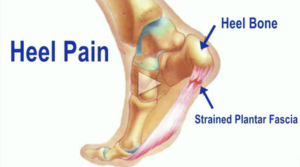Many patients do not understand the importance of physical therapy to their treatment. They think it is time consuming and not beneficial. The most common things I hear are “I already do that on my own,” or “I can do that on my own.” The truth is, none of us are trained professionals in physical therapy. You may think you are doing all the right things, but if you are not doing them correctly or frequently enough, you can actually be hurting yourself more than helping.
Why is physical therapy important?
I send patients to physical therapy for many different reasons. The basis of why I send any patient is to help them return to their daily activities as quickly, safely, and pain-free as possible.
Reasons I send patients to physical therapy…
Ankle sprains are a very common reason I send patients to physical therapy. When you have an ankle sprain, you stretch out all of the tendons and ligaments in your ankle. Once these ligaments are stretched out, they never return to normal. This will make you more prone to future ankle sprains. Physical therapy helps to decrease pain and inflammation after the sprain, as well as strengthen the injured tendons. Physical therapy will also improve proprioception, or balance, which is often lost with ankle sprains.
I also send patients with heel pain to physical therapy. The most common cause of heel pain is plantar fasciitis. This usually starts with a tight ligament, your plantar fascia. Plantar fasciitis is commonly associated with a tight Achilles tendon and pain in this area. Whenever I see a patient with plantar fasciitis I start treating them with a night splint used for stretching, ice, and anti-inflammatories. I also discuss with the patient orthotics(custom insert for their shoes) and appropriate shoe gear. Not wearing anything that is too flat or a heel that is too high. If this does not help to alleviate their pain, then we discuss steroid injections. Steroid injections directly target the area of inflammation. In patients where three steroid injections have not relieved their pain, or patients who do not want injections, physical therapy is the next option. The physical therapist will help to stretch you out more than you ever will yourself. They will also use techniques to mobilize the plantar fascia and modalities such as hot/cold and ultrasound to decrease inflammation. Your physical therapist will also show you exercises to do at home to help prevent the plantar fasciitis from coming back.
We also suggest physical therapy after surgery. Regardless of what procedure you have, physical therapy can help to decrease your pain and inflammation, increase range of motion at the surgical site, and help you return to your daily activities as quickly as possible.
Physical therapy may be beneficial for you to do in addition to any treatments we do in the office. If you are having any foot pain, request an appointment or call Hollowbrook Foot Specialists today at (845) 298-9074. We are serving the Hudson Valley from Wappingers Falls.
David Schlam D.P.M.



